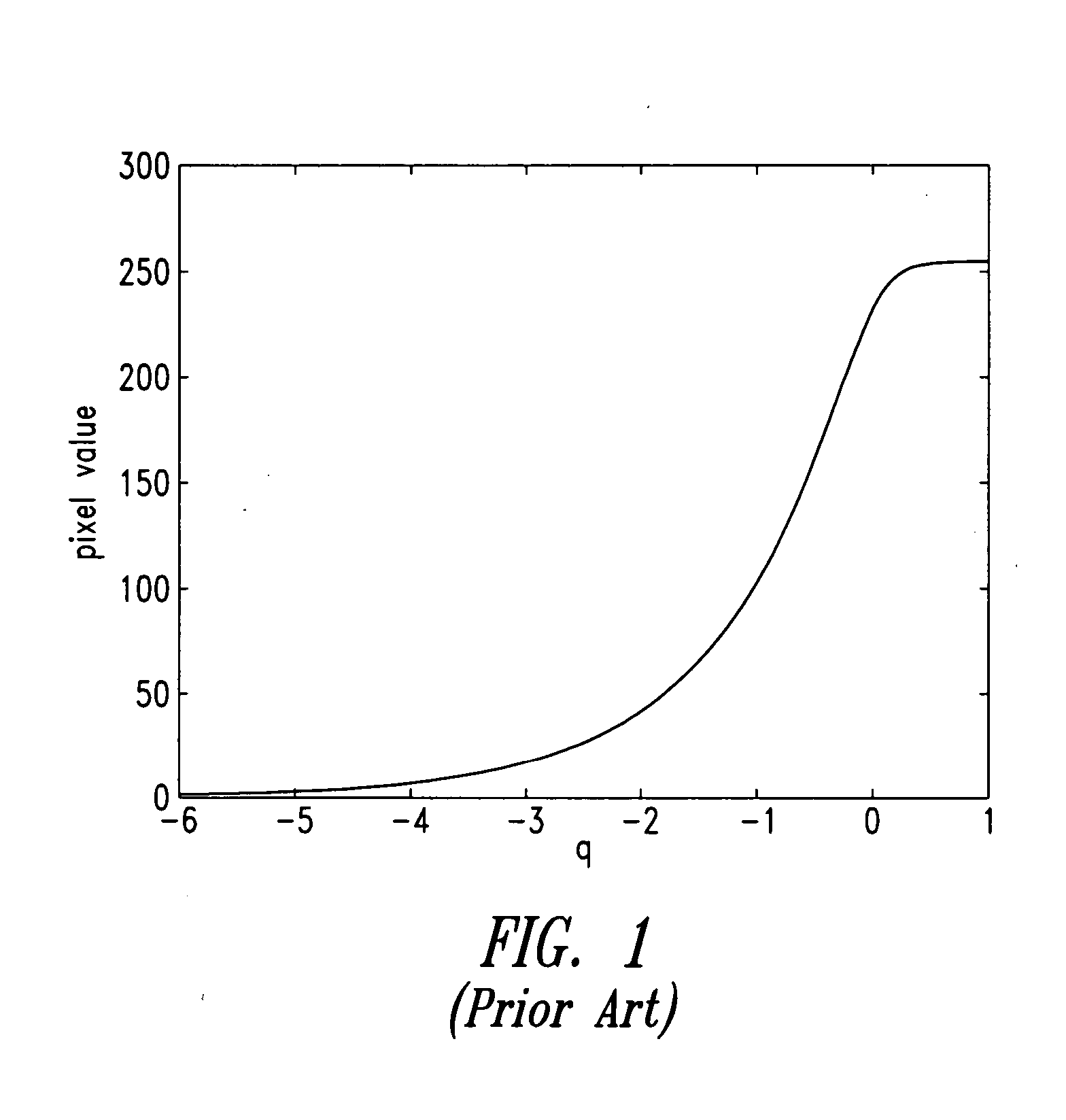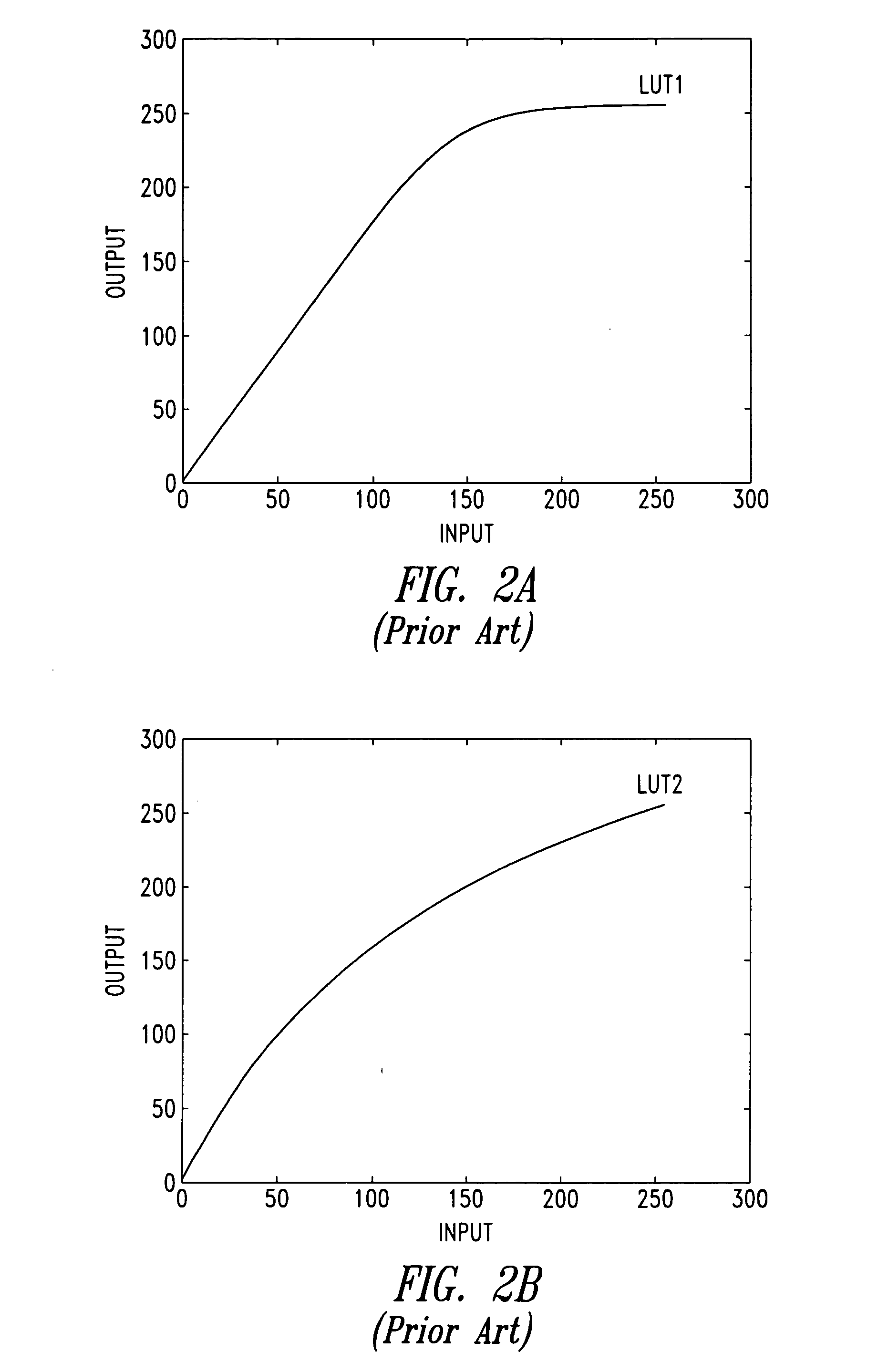Digital image processing method having an exposure correction based on recognition of areas corresponding to the skin of the photographed subject
a digital image and processing method technology, applied in image data processing, character and pattern recognition, instruments, etc., can solve problems such as image quality, flash device, and generation of sub-optimal photographs
- Summary
- Abstract
- Description
- Claims
- Application Information
AI Technical Summary
Problems solved by technology
Method used
Image
Examples
first embodiment
In a first embodiment, this recognition step is substantially based on a probabilistic function.
In particular, for each pixel of an image taken in the YcrCb format a probabilistic slicing is prepared to evaluate if this pixel must be classified as belonging to the subject skin. Based on this slicing, a new image is thus processed with a normalized grey scale, wherein the subject skin is highlighted as indicated in FIGS. 5A-6C on two different photographic images which depict human subjects.
Based on this first embodiment of the recognition step of the photographed subject skin, the image pixels with higher grey values are considered as belonging to the skin of the photographed subject.
The areas being detected by using this first embodiment of the recognition step of the skin of the photographed subject on an image shown in FIG. 5A are shown in Figure and 5C. Similarly, FIG. 6C highlights areas of the image of FIG. 6A corresponding to the skin of another photographed subject, acc...
second embodiment
In a second embodiment, the recognition step of the image areas corresponding to the skin of the photographed subject is substantially based on a single threshold area and it provides an RGB-format image processing in order to produce a chrominance slicing histogram starting from normalized channels r and g as described in the article by Soriano et al. entitled “Skin Color Modeling Under Varying Illumination Conditions Using the Skin Locus for Selecting Training Pixels”, Real-time Image Sequence Analysis (RISA2000, August 31-September 1, Finland), which is hereby incorporated by reference in its entirety. In particular, the normalized channels r and g are defined as:
r=R / (R+G+B) (10)
g=G / (R+G+B) (11)
The resulting bidimensional histogram shows the chrominance slicing in the image and the areas having the right human skin chrominance slicing are thus detected by applying a single threshold area. In particular, the pixels of the processed image belonging to the threshold area are cl...
PUM
 Login to View More
Login to View More Abstract
Description
Claims
Application Information
 Login to View More
Login to View More - R&D
- Intellectual Property
- Life Sciences
- Materials
- Tech Scout
- Unparalleled Data Quality
- Higher Quality Content
- 60% Fewer Hallucinations
Browse by: Latest US Patents, China's latest patents, Technical Efficacy Thesaurus, Application Domain, Technology Topic, Popular Technical Reports.
© 2025 PatSnap. All rights reserved.Legal|Privacy policy|Modern Slavery Act Transparency Statement|Sitemap|About US| Contact US: help@patsnap.com



